#rahu goddess
Explore tagged Tumblr posts
Text
I love going so hard for all I am like my whole birth chart I’m in love vishaka sun jyeshtha rising chiron & Pluto 👁 ardra moon Hasta mars Mula Venus in the 1st house
4 notes
·
View notes
Text
Mula Nakshatra: The Primordial Cosmic Force.

versão em pt-br
Tropical Astrology orients the zodiac to the point of the Vernal Equinox, which marks the beginning of the sign of Aries. Vedic astrology orients the zodiac from the 'Galactic Center' to the center of the Galactic Sun, where influences pass through us via the fixed constellation of Sagittarius. The Galactic Center is called 'Brahma,' the creative force, or 'Vishnunabhi,' the navel of Vishnu. From the Sun emanates the light that determines life and intelligence on Earth, directing the seven rays of creation and the distribution of Karma.
In terms of sidereal astrology, the Galactic Center is located at the beginning of Sagittarius. In the Vedic system, it is found in the lunar constellation (nakshatras) called 'Mula,' which means 'the root' or 'origin.' Mula can thus be seen as the first in the series of lunar constellations. It marks 13º 20' of Sagittarius, in the middle of which the Galactic Center is located. The last in the series of lunar constellations is Jyeshta, which means 'the eldest,' found at the end of Scorpio. This shows that the ancients knew of the Galactic Center and named the constellations accordingly. The Mayans identified the Galactic Center as Hunab Ku, representing the Supreme God and Supreme Creator. It is considered the 'Mother's Womb' that constantly gives birth and gave birth to the Sun and the planet Earth. It is believed that Hunab Ku directs everything that happens in the Galaxy from its center through the periodic emission of 'Consciousness Energy.'
The energy of the Galactic Center is primarily transmitted by Jupiter, called 'Guru,' the teacher in Vedic astrology, and by Sagittarius. Jupiter is said to be the teacher of the Gods, the cosmic power of light. In this regard, he is even the teacher of the Sun, the guide of the world. Jupiter represents and directs Galactic Light to the solar system.
This association of Mula with the Galactic Center suggests a strong connection to primordial and cosmic forces, symbolizing the ability to access deep and transformative wisdom that may surface from intense experiences or a spiritual quest. The strong influence of Mula may manifest as a deep connection with these cosmic energies, reflecting a desire to get to the core of issues and seek the truth in its rawest and purest form.
Ketu, the planet that governs Mula, also deals with reaching the core of everything. It stores past Karmas and releases those mature enough to be experienced in the present. It can help gather the necessary tools to fulfill the objective of the present life. This is suggested by the symbolism of the tied roots. Mula, therefore, helps in gathering, meaningfully, the talents developed in past lives.
Mula is concerned with investigating invisible or unknown things. Along with its counterpart Ardra (which lies directly opposite in the zodiac), Mula has the strongest and deepest sense of investigation among all nakshatras. Mula is directly associated with medicinal purposes. In ancient medicinal systems like Ayurveda, roots of various plants are used for medicine preparation. Similarly, Mula is also related to the root of diseases, such as microorganisms like viruses, bacteria, etc. Like everything under Mula's jurisdiction, these microorganisms are invisible to the naked eye. The fact that the roots are tied suggests a sense of limitation. As a result, Mula often does not allow much freedom or dispersion of energies, causing people to dive deep within a limited sphere.
Mula Nakshatra is deeply connected to the figure of Nritti, a powerful and enigmatic goddess of Vedic mythology. Nritti is often associated with destruction, chaos, and dissolution, but her influence goes far beyond just being a destructive force. She represents the primordial forces that deconstruct and dismantle to allow something new and more authentic to emerge. Nritti is the goddess of transformation through destruction. She governs the process of disintegration necessary for renewal and regeneration, reflecting the idea that for growth to occur, something old must be undone. In many ways, Nritti can be seen as the guardian of the boundaries between the known and the unknown, between comfort and chaos, symbolizing moments of crisis that challenge old structures and beliefs, paving the way for personal and spiritual development. Mula's symbol is a bundle of tied roots, representing the exploration of origins, the unveiling of deeper truths, and the search for the essence of any situation. However, to reach the roots, one must undergo processes of destruction and deconstruction, aspects deeply connected to Nritti's energy. Those who have significant planets in Mula Nakshatra may experience intense moments of destruction and rebirth throughout their lives, being called to abandon old identities, beliefs, and situations to transform into something new and more authentic.
Nritti's influence on Mula also emphasizes the importance of facing chaos and the unknown as part of the path to enlightenment. Mula is the nakshatra of deep investigation, where the sought truth is revealed, often in a harsh and challenging way. Nritti guides this quest, ensuring that illusions are destroyed so that the truth, no matter how raw, can emerge.
It is in Mula's nature to quickly cut and destroy things that have lost their value. Most often, it regrets its actions in hindsight. Only when its Universal will is aligned does Mula operate in a wise, Jupiterian manner. The struggle between universality and individuality reaches its peak here, as individuality is at its highest expression. The process of individualization begins in Ashwini, is celebrated in Magha, and culminates with completed individual experiences in Mula. Beyond the realm of the ego and egocentrism, Mula is a proud and arrogant nakshatra, often unable to comprehend its own power and abilities. In some cases, this is good, as its capacity to inflict damage on itself is restricted by its ignorance. Its terrible and demonic side comes from Ketu's negative functioning in its lower aspects, potentially generating ego, vanity, and arrogance, which can lead someone to commit abominable and demonic actions.
#astronomy#jyotish#vedic astrology#astrologia#vedic astro observations#nakshatra#spirituality#spiritual awakening#dark moon#astrology#numerology#dark femininity#dark feminine energy#dark feminine aesthetic#sidereal astrology#vedicastrology#psicology#psicologia#thriller psicologico#ketu#rahu ketu#mula nakshatra#moola#moola nakshatra#nritti#goddess#vedic astro notes#sagitario#sagittarius#signos
107 notes
·
View notes
Note
Hi! Hope you're having a great day💕 I love your game idea! Can I participate too?
Here's my chart
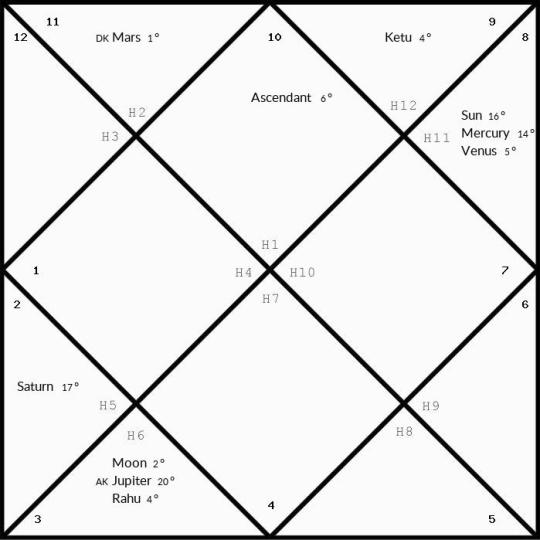

Thank you💜✨️
Hello, thanks for participating.
🤍💕
Your divine archetype:
🦌🍃Fearless wanderer and devoted protector 🏹🌙
Your goddesses:
Artemis_ Greek Lunar goddess of the hunt, vegetation, wild animals, and childbirth, virgin and protector of young women.
Artemis and her Roman equivalent_ Diana are both of the archetype that I associate with your moon nakshatra_ Mrigashira.
Mrigashira's ruling deity is Soma_ moon god. Mrigashira is also associated with hunting, running, chasing, pursuing, searching and finally finding what you were looking for. If Rohini is the content enjoyment, Mrigashira is all about the birth of excitement and the potential of distraction. It's the nakshatra of temptation and realization, also of paranoia and suspicion. It is also associated with plants, and Atremis is a goddess of vegetation.
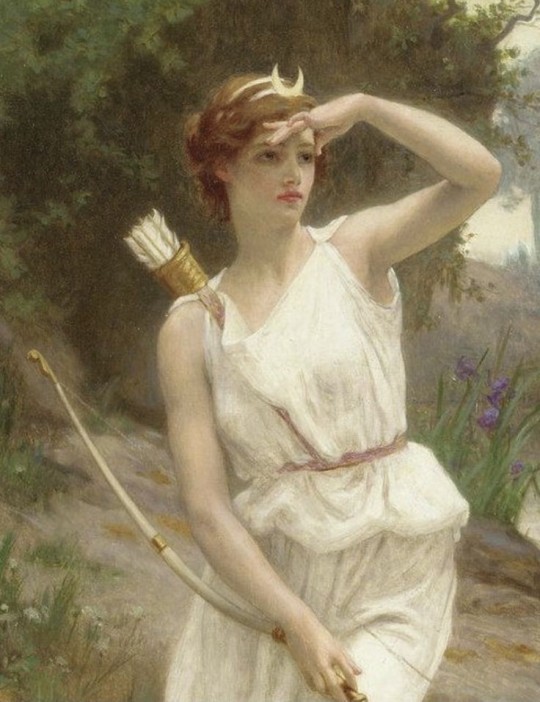

But besides this coorelation of them to your moon nakshatra, they also fit perfectly with the rest of your chart.
Artemis and Diana are known for their "virginity", which in mythological "terms" and understanding means independence, especially from men and male energies.
Your ascendant is in the most independent nakshatra, the solar Uttara Ashadha, which is in many ways the nakshatra of natural authority. It's the only nakshatra that doesn't have a yoni consort(mongoose yoni) and interestingly, it's the enemy to snake yonis(mrigashira and rohini).
So, this independent, cool, self-possesed attitude has a deep unconcious need for exploration and an innate curiosity. Those latter traits are enhanced by the fact that your moon is in the Gemini portion of Mrigashira. It's even more oriented towards wandering, mental/rational reliance and possible flightiness than the Taurus part. But despite that, Mrigashira is still a nakshatra that "maintains" or tries to maintain(Venus, Mars and Saturn nakshatras all are. Ketu is creation, Venus is maintenance, Sun is destruction, Moon is creation... you get it). There is a determination to Mrigashira, as it is to all those "Vishnu"(maintenamce) nakshatras, but it also has a fearlessness that adds to it. It is a very interesting nakshatra that shows how after the first seed of suspicion or curiosity, it's a downward spiral, and if you try to avoid it, you will go down it faster.
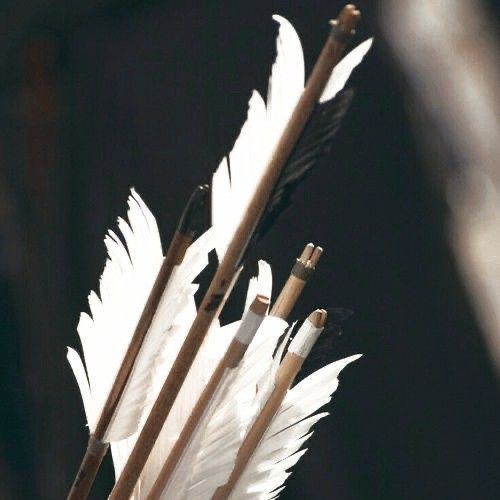

Diana/Artemis archetype is the protector of young women. Both Mrigashira and Uttara Ashadha fit that description. Mrigashira women often are very aware of feminine needs and rights and try to voice them, Uttara Ashadha women(Sun women in general) are usually loyal and supportive towards other women.
Now, there is another interesting coorelation to your chart_ Anuradha, your Sun nakshatra, is the nakshatra of devotion and friendship. Atremis was accompanied by young nymphs and they were an integral part of her worship. Devotional and radically loyal Anuradha is definitely an aspect of that archetype, even just the vow of virginity.
Anuradha is a Scorpio nakshatra, so it's by no means shallow or surface level. Even though Mrigashira and Uttara Ashadha are less prone to that level of involvment, especially with platonic, familial or romantic relationships, your Sun, Venus and Mercury in Anuradha add real depth to you. And your Ketu in Mula does too, along with it fueling the natural fearlessness(despite possible nervousness) and the connection to wild animals/wilderness. There's also your Jupiter atmakaraka(soul planet, the one with the highest degree) in Punarvasu, that represenst a very generous and even protective part of you.


Despite her being loyal, she also expects the same from others. Artemis is a goddess of strong moral convictions. According to one myth, Zeus managed to seduce one of her handmaidens Kallisto/Callisto and get her pregnant. When Artemis disovered it she transformed the girl into a bear and banished her to the wilds. This is a little cruel to me ngl😭 but it just demonstrates her high regard for utmost respect towards her by those she chooses to stand by.
That's basically a radical version of how 11th house groups function(it's ruled by saturn, like capricorn_ your ascendant and its natural 10th house). Anuradha is also about friend groups, a Saturn-ruled nakshatra that is very clear about protecting(Mars_ rashi rulerships) the rules(Saturn) by which these groups are made and held by. It's also in your 11th house, making your Sun, Mercury and Venus a part of it.


Another one tells how her brother_ Apollo, was jealous of her handsome giant companion_ Orion and tricked her into killing him with a distant bow shot. Grieving him, Artemis placed him in the sky as the constellation Orion. Orion is actually in Mrigashira(the beginning of it). This loyalty is another, a softer side of that kind of devotion.


It is also worth mentioning that your Moon is conjunct Rahu in Mrigashira with only a two degree difference, also in Gemini. These themes of search for purpose and beuaty, curiosity, temptation, are ultimately your destiny.
So this is probably the only ask by far where a single archetype just fits so perfectly that adding other goddesses seems pointless but I'm going to mention them anyways.
Look into goddesses of loyal, platonic or sexual love or devotion. Greek goddess Philotes might be of interest to you, maybe also Norse Sygin.
There is also a strong association of Mrigashira to mountain goddesses, and I'd say Uttara Ashadha might fit that too, esp since your asc is in the part of Capricorn(it's house_ 10th house represents the mountain peak, the most visible but detached part, and it's an earth sign). Parvati is one of them and she's often talked about when discussing Mrigashira. Even though she's not directly associated with your nakshatras, I'm still going to mention Greek Rhea. She might be interesting to you.
...
I tried to do my best🥲
Please leve a feedback after reading💕💕 it doesn't have to be a long one, just honest
And you can message me if you have questions🤍 or just comment.
#vedic#vedic astrology#nakshatras#mrigashira#uttara ashadha#anuradha#11th house#artemis#diana#greek mythology#roman mythology#moon in mrigashira#moon in gemini#rahu in mrigashira#astroblr#astrology#astrology tumblr#sidereal astrology#vedic astrology observation#vedic astrology observations#vedic astro notes#astro#astro community#astrology reading#mythology#goddess essence game
12 notes
·
View notes
Text
The Mother of Sun Wukong's Children in Journey to the South
In my previous articles "The Monkey King's Children" and "Yuebei xing, Daughter of the Monkey King," I revealed that Sun Wukong has three children in Journey to the South (Nanyouji, 南遊記, c. 1570s to 1580s). These include sons Jidu (奇都) and Luohou (羅猴) and daughter Yuebei Xing (月孛星). The novel never explains who the mother is, but an educated guess can be made for the purposes of fan fiction.
Each child is based on one of three lunar deities appearing among the “Eleven Luminaries” (Shiyi yao, 十一曜), which comprises planetary gods from both South and East Asian astrology. The specific deities are:
Jidu (奇都, “Ketu”) = Represents the southern (descending) lunar node, or the point where the moon crosses the earth’s orbit around the sun. Associated with eclipses.
Luohou (羅睺, “Rahu”) = Represents the northern (ascending) lunar node. Also associated with eclipses.
Yuebei Xing (月孛星, “Moon Comet Star”) = Represents the lunar apogee, or the furthest point in the moon’s orbit.
Given their close connection to the night time celestial body, it would make sense for the mother to be Taiyin xing (太陰星, “Great Yin Star”), goddess of the moon from the Eleven Luminaries.

A detail of Taiyin xing from a Chinese depiction of the Eleven Luminaries (larger version). A full version of the drawing appears in the Ink Treasure of Wu Daozi (Daozi mobao, 道子墨寶, c. 13th-century) (larger version). She is the fourth person from the left on the top row.
#Yuebei xing#Jidu#Ketu#Luohou#Rahu#Sun Wukong#Monkey King#Journey to the South#JTTS#Journey to the West#JTTW#Monkey King's children#Lego Monkie Kid#LMK#Moon goddess#moon#fan fiction
147 notes
·
View notes
Text
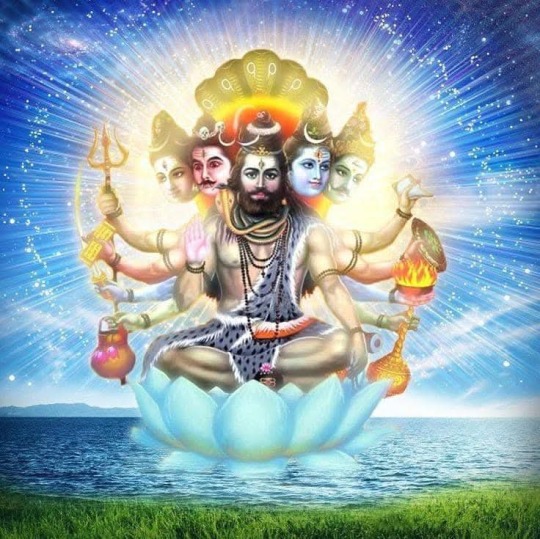
My Venus-Malavya Yoga, conjoined with Rahu and Jupiter (guru chandal), I see as strongly related to this unique journey I've taken spiritually.
Venus, the planet of beauty, creativity, and pleasure, relational matters, aesthetics.. combined with the wisdom, higher learning, and expansiveness of Jupiter, signifed an incredible, insatiable drive towards understanding divine truths through personal experience, ripe sensuality and aesthetics.
With Rahu, the shadow planet of desire, obsession, unconventional/taboo fixation in the mix, there is a profound yearning to transcend limitations of the material world and immerse deeply into the mystical realms - I have guru chandal in both my d1 and d60 chart, in d60, it is so close, it is within the exact same degree and devata.
With jupiter as my atmakaraka, it is at the forefront of my desires - it signifies a formidable counter to rahus cravings, intensity and potential for unchecked hunger and delusion..
Jupiter as it is, the only planet truly, naturally equipped with the capacity for understanding and being prepared to handle the shenanigans of Rahu.
This planetary alignment is indicative of one who will seek to experience and integrate transcendental states through rasa, the deep emotional currents, impressions, in which flow through day to day life, art, and spiritual pursuits.
The influence of Rahu, when paired with Jupiter’s expansive nature, has the ability to lead to a deeper, more intense pursuit of spiritual knowledge, pushing an individual into altered states of consciousness, transgression; often through practices that involve sensory perception and aesthetic experience - through carnal pleasure and the sensorial/conceptual marriage of Venusian domains, when paired with Venus.
(Ketu is also in my 1st house in the d1, d9 and d10 chart)
This powerful conjunction aligns well with the strive to encounter transcendental states, through meditation, profound aesthetic experiences and their interplay.
Rasa, the essence of flavor or emotional experience, plays a central role in Kashmir Shaivism, where it acts as a medium through which one tastes the divine.
Naturally, durations of deep, ecstatic connection to art, music, sensuality, nature etc have allowed me to enter into higher states of consciousness, where the boundaries between self and the universe dissolve, and I experience the ultimate oneness of existence.
In the tantric tradition, such experiences are seen as gateways to direct communion with the divine, where every sensation is a reflection of Shiva’s infinite presence.
The Guru Chandal Yoga aspect, while for many, is very challenging, I believe opened me up to deeper spiritual insights by pushing me to question the nature of knowledge, conventional, "renunciate", spiritual pursuits and reality period.
This relationship of my astrological blueprint and spiritual path, highlights the flavor of Venus-Malavya Yoga conjunction with Rahu and Jupiter - driving me toward profound transcendence through the sensory and mystical experiences central to Kashmir Shaivism.
The notion of Rasa, the essence of aesthetic experience, as a means to liberation.. struck me heavily, early on in exploring shaivism.
It connected in me.. that, in moments of pure aesthetic experience, I was not just observing beauty—I was becoming it, dissolving into it, touching something beyond the world of form.. and this was something I could hone and study, guiding me to understanding metaphysical truths.
I always knew beauty itself could be a path to liberation, while so many religions and systems see it as a distraction, or even a reason to punish/for suffering.
This is what initially drew me to the teachings of Abhinavagupta, whose work on aesthetics, sensory enjoyment, spirituality and their synthesis, opened a new door.
The Kashmir shaivite perspective on Rasa and spanda were the two initial draws, with svatantrya being the deal closer.
I was captivated by Abhinavagupta’s understanding that the experience of beauty, especially through art, is a streamline to supreme truth.
The notion that the world; the evil, the good, the bad and the transcendent could be perfectly reconciled and merged seamlessly- that the world was not as something separate from the divine, but as an expression of it - that we could one day realize everything is perfect, as I have experienced in my transcendent states before.. felt not only real based on my experience, but what most spirituality was missing.. while also, being the ultimate OBJECTIVE and scenario of metaphysical conquests..
In this philosophy, there is no distinction between the sacred and the mundane; everything is a manifestation of the divine play.
Abhinavagupta’s teachings on tantra helped reinforce and outline extensively, what I had initially dreamt and had been rebuked, punished, and ostracized for believing.
#esoteric#occult#hinduism#tantra#shiva#goddess#shakti#bhairava#spirituality#sanatanadharma#vedic astrology#astrology#religion vedic#venus#jupiter#rahu ketu#guru chandal#rasa
4 notes
·
View notes
Text
Manifesting Energy
Sun Nakshatras: Love and Patience
Moon Nakshatras: Making deals with Gods, Goddesses (Ex: Hekate)
Mercury Nakashatras: Your own energy. Just do it.
Jupiter Nakshatras: Use your mind. Think it, daydream it, visualize it.
Saturn Nakshatras: Being apart of a collective. (Ex, being apart of a church, being apart of a well known family, a well known sports team) You need to be apart of something for you to do something on your own.
Mars Nakshatras: Just looking at it. Make a vision board and hang it up.
Venus Nakshatras: Being delusional. Tell yourself a story and it'll eventually become true.
Rahu Nakshatras: Just live it. (You want to be a teacher? Live how a teacher would, etc etc)
Ketu Nakshatras: Being a hater lol. (You want someone to bring you water? Fully hate the idea of someone bringing you water)
DONATIONS/KO_FI
#manifesting#manifestation#rahu#venus#mars#jupiter#nakshatras#ashwini#uttara bhadrapada#ketu#sidereal observations#vedic astrology#astro notes#astro observations#astrology#nakshatra#sidereal astrology#askkerinnavedic#vedic observation#vedic notes#magha#mula#revati#shravana#rohini#27 lunar mansion
348 notes
·
View notes
Text
Random Mini Astrology Observations: Vedic Edition
Warning: This is just a string of random thoughts lol, don't compare it to my best work on here. It's a bunch of stuff I've had in my drafts and I'm trying to clear it all out
Before I get into this, I just want to say, that whether my observations are positive or negative, it won't apply to every individual who has these placements. 8 billion people exist on this planet, and not everyone will exhibit the same good or bad qualities. I hate having to put this PSA because some people don't get it but yeah "not all Lunars/Venusians/Nodals/Solars/Jup/Sat are going to be the same".
Jupiter influenced men are known for being introverted cutie pies who kinda have that mature-dilf-y vibe.
Obviously, another category of Jupiter men are often loud, extroverted and very outgoing but I've noticed these placements heavilyyyy in celebrities "known" for being private and introverted. They are also often known for being generous and kind hearted.

Prabhas, Vishaka Stellium (Moon, Mercury and Venus)
He is known as "darling star" and brings food that he has prepared at home for everyone on set (he is an actor). He is known for being very shy and introverted but also super sweet, generous and kind.

Sidharth Malhotra, Vishaka Moon
Sid is known for being extremely lowkey which is RARE for a Bollywood actor. He's also quite gentlemanly and charitable

Ratan Tata, Vishaka Moon
He is an Indian billionaire entrepreneur who lives in a small 2bhk apartment and has donated most of his personal wealth to charity. He is known for having led his company in a very humane way (there are lots of controversies and im aware of them but compared to the work culture and quality of life that most other indian companies offer its employees, TATA is in a different league).

Keanu Reeves, Punarvasu Moon (and stellium)
i dont have to explain but Keanu is the king of kindness and generosity

Mads Mikkelsen, Vishaka Moon
unlike his characters, Mads is actually a sweet guy and very private

Adam Driver- Vishaka Sun
he's so private that nobody even knows he's married with a kid

Tom Hanks, Punarvasu Sun
known for being a gentleman and quite modest. the OG nice guy and obviously very private

Ethan Hawke, Vishaka Sun
another lowkey, private guy who is known for being nice
2. Rashmika Mandanna and Surbhi Jyoti, Swati Moon


I find their eye area to be kinda similar?? I know they don't look alike but there are some overarching similarities between them and I think its bc they have the same moon nak.
3. I came across a comment that Akshay Kumar made about Asin and her CEO husband Rahul Sharma.
“He is madly in love with his wife, his child. It’s like he treats her like a goddess.
and guess what?? Rahul is a Purvashadha Sun 🥺😌😌

4. Ashwini natives often have post-apocalyptic dreams
Since its the first nak and is ruled by Ketu and is in complete darkness, symbolically representing the stage before creation (which happens in Bharani), the subconscious mind is susceptible to having really strange, fcked up, war-like dreams/visions. Also bc Aries rashi is ruled by Mars, God of War.
5. every Venusian man I know kinda has a voice kink
6. Many Punarvasus crave for a simple, rustic, relaxed type of life. In fact many famous Punarvasus live on a farm

Kaley Cuoco- Punarvasu Moon

Bretman Rock - Punarvasu Sun

MS Dhoni- Punarvasu Sun

Dennis Quaid, Punarvasu Moon on his ranch
7. Jupiter and Venus are 'Brahmins' or priestly, the Sun and Mars are 'Kshatriyas' or warriors, the Moon is 'Vaishya', or a trader, Mercury is a 'Vaisya', Saturn 'Shudra', or a lower caste and Rahu and Ketu are outcastes.
This is not an observation but just an astrological fact that I thought I'd mention
8. Magha girls are often the spoilt daughters or come from very bougie families where they're the princesses. They might emotionally suffer but materially and otherwise, they're very comfortable

Shruti Hassan- Magha Moon
she has spoken about how rough her childhood was bc of her parents' tumultuous marriage and subsequent divorce but that doesn't change the fact that she's the daughter of Kamal Hassan, one of the biggest stars in the history of Indian cinema

Kiara Advani- Magha Moon
Kiara is from a very wealthy and illustrious family, and she grew up as a much loved, spoilt ish daughter<3

Wonyoung- Magha Sun
Wonyoung is from a filthy rich family and she has said that she grew up very pampered. And that she didn't have an allowance bc whatever she asked for she got. However she became a trainee at 12yrs of age and that journey could not have been easy. Despite being born rich, she's had to go through a lot in life to be where she is today
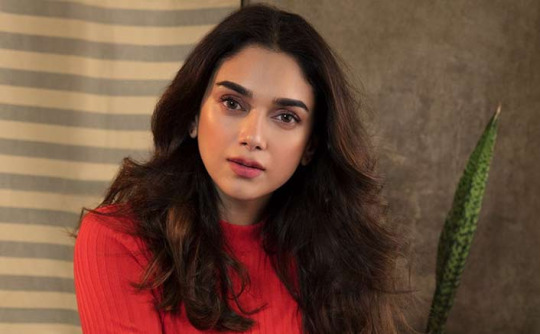
Aditi Rao Hydari- Magha Moon
she's of actual royal lineage so she's a real life princess but her parents divorced when she was a kid and she grew up with a single mom in delhi and not in a palace
9. DMX- Mula Sun (dog yoni) was obsessed with dogs
The late rapper DMX's relationship with dogs, which seems almost mythical. He was born in 1970 - the year of the Metal Dog, and in his teens he ran away from his abusive household and befriended stray dogs while vulnerable on the streets. He began to gather dogs for protection, intimidation and family, and was sent to prison for stealing a dog (a neglected dog chained up in a scrapyard). In prison, he wrote a lot of his early songs, in which he came up with his "dog" mythology, in which he imagines himself as a monstrous dog-themed gangster who barks and howls. He had a huge tattoo of his favourite dog Boomer on his back. In 2008, his 12 dogs were taken from him by cops after there were reports of animal cruelty - DMX had paid a negligent caretaker to look after the dogs while he was on tour. (The dogs lived out the rest of their lives as therapy animals in a women's prison)
I think its interesting how our yoni animal influences our life
10. As Vighati graha, male planets are: Sun, Mars, Jupiter, Rahu; female planets are: Moon, Venus, Ketu whilst two eunuch planets are Mercury and Saturn. All the standard rules for determination of the sex of the child are applicable, female signs are: Taurus, Gemini, Virgo, Scorpio, Capricorn and Aquarius; male signs are: Aries, Cancer, Leo, Libra, Sagittarius and Pisces. Exalted planets indicate male issue and debilitated planets indicate female.
11. Mercurial men and Jupiter men are soooo flamboyant, sassy and gender non-conforming

RuPaul- Vishaka Sun & Moon

Elton John- Jyeshta Rising

Jeff Goldblum- Jyeshta Moon

Prince- Vishaka Rising

Jimi Hendrix- Mars in Vishaka atmakaraka
#astro observations#vedic astrology#astro notes#astrology notes#vedic astro notes#sidereal astrology#astrology observations#astrology#nakshatras#astroblr
193 notes
·
View notes
Text
⸻ 𖤓 | VEDIC ASTROLOGY MASTERLIST (Vol. 4)
→ Volume 1 | Volume 2 | Volume 3
POWER AND CONTROL: ASHWINI, MAGHA AND MULA
NODAL DOMINANT THEMES
WHY CERTAIN PEOPLE CAPTURE THE SPOTLIGHT?
KRITTIKA NAKSHATRA (26°40' ARIES - 10°00' TAURUS)
KRITTIKA THE WILD WOMAN
WOLVES IN HUMAN DISGUISE: KETU-RAHU
27 NAKSHATRAS THROUGH MANY FACES
ASTROLOGICAL CONNECTIONS IN CREATIVE COLLABORATION
JUPITER WOMAN x KETU MAN
THE GODDESS LALITA AND THE LOLITA ARCHETYPE
VENUSIANS: THE CULT OF EXCLUSIVITY
VENUS NAKSHATRAS AND THEIR PARTNERS
THE SHADOW OF ANURADHA & THE BLACK WIDOW
MLECCHA NAKSHATRAS - WORLD WIDE WILD
HOW WOMEN INFLUENCED BY DIFFERENT PLANETS ACT IN ONE-ON-ONE RELATIONSHIPS
SATURN/SOLAR WOMAN AND KETU/JUPITER MAN DYNAMIC
SUN DARAKARAKA: THE POWERFUL SPOUSE
ASTROLOGICAL OBSERVATIONS: 5H PLACEMENTS
MURDERS AND KETU NAKSHATRAS WOMEN
THE PAIR OF TWINS: ASHWINIS
ASHWINI OBSERVATIONS
DITA VON TEESE’S NATAL CHART
YONI ANIMAL OBSERVATIONS
ASTROLOGICAL ANALYSIS: SIMILARITIES BETWEEN IAN SOMERHALDER AND MEGAN FOX
SIDEREAL INDICATORS OF BEING ALLURING, MAGNETIC, & SEDUCTIVE
THE ASTROLOGY BEHIND: MISS UNIVERSE 2024
ROHINI & ASHLESHA: THE SIREN ARCHETYPE
NAKSHATRA ANALYSIS: ROHINI |
★ THE BEAUTY OF: ROHINI | DHANISHTA |
BEAUTY PLACEMENTS
(THE SUBSTANCE): BHARANI THEMES
KETU IN THE HOUSES
MAGHA’S THRONE & ANCESTOR CONNECTION
SUCCESSFUL WOMEN WHO BUILT A MAN
MERCURY ATMAKARAKA: SOULS IN SEARCH OF DIALOGUE AND WISDOM
A MINI EXPLORATION OF MULA LAGNA NATIVES
ROHINI: LOVE TRIANGLE?
ROHINI AND CURIOSITY
SOME OBSERVATIONS ABOUT KRITTIKA NAKSHATRA
THE KETU WOMAN DICHOTOMY
NOT FEELING UNDERSTOOD BY OTHERS: ROHINI NAKSHATRA
THE SUBSTANCE (2024): PURVA BHADRAPADA AND VISHAKHA THEMES
VENUS DOMINANT THEMES — NAKSHATRA OBSERVATION SERIES
VENUS IS ALSO NOT AS SOFT & GENTLE AS PEOPLE THINK
MOVIES WITH PROMINENT TRINE NAKSHATRA INFLUENCES
SUN DOMINANT THEMES | OBSERVATIONS
#sideral astrology#vedic astrology#vedic astro notes#vedic astro observations#rahu#ketu#astrology community#horoscope#zodiac#nakshatras#astrology masterlist#masterlist astrology#d9 chart#navigation#masterlist#masterpost#astrology masterpost#jyotish#bhavat bhavam#atmakaraka#lagnesha#vedic notes
99 notes
·
View notes
Text
Intresting Astrology facts.
Cancer ancendent, their seventh lord is Saturn and their seventh house is Capricorn, hence they face lot of dissatisfaction in their married life and has to work for their partners alot .
Gemini ancendent always look for their better half or wants company to complete them, as Gemini is ruled by Mercury and Mercury being kid, always wants to be with someone.
Taurus ancendent are great foddie as moon is exalted.
Any planet that gets combusted has special purpose in this life time, as you have done lot of mistakes regarding that planet in previous life so in this life that planet is combusted.
Mercury combust- You have to learn to be confident and develop leadership qualities in your life time
Venus combust- You have to learn to balance your finances, work and love life and become grounded in relationship.
Mars combusted- You have to show courage and help people unconditionally and also be humble about your strengths.
Jupiter Combusted - You need to be humble about your knowledge and show respect to elders and gurus in your life also give knowledge unconditionally.
Saturn combusted - Saturn -Sun conjunction becomes problematic only one you have poor relationship with your father, otherwise this combination is good for someone who wants to go for government job and can reach great heights, but again be humble, otherwise Saturn will trouble you
You have to respect, father, government, and higher authority.
For natives ruled by nakshatra of ketu, ie Ashvini, Magha and Mula(ketu), their lucky planet is Mercury, so if they really maintain good circle of friends and keep developing their skills, and do something for kids always they will really prosper in life.
Moon is another planet which is good for their well-being, if the align themselves with moon cycle and carry Moon related objects like Moon water, or even stay near flowing water they can keep themselves physically and mentally balanced..
Native ruled by nakshatra of Rahu Ardra, Swati and satbhisha (Rahu) their lucky planet is Mars, always have cordial relationship with your brother, be courageous, involve yourself in some kind of sports or excercise. You will notice great changes in you
Lucky objects to Carry with you are green colour cloth or objects with you .
For natives of moon nakshatra ie Rohini, Hasta and sravanam nakshatra, Sun is the lucky planet, so if they become disciplined in life and start taking sun bath daily they will notice great change in their life, another planet is Jupiter, whose constant blessings will keep them physically and mentally fit.
You can carry with you, yellow topaz especially to work place, it will get you good results.
For the natives of sun nakshatra, kritika, uttarphalguni, uttarshada Venus is lucky planet, so start taking care of you daily and spend some time and money on self care and self love, pray to female goddess and respect females, you will notice great change in your life in a positive way, lucky object that you can carry with you for your mental and physical well-being are idol of elephant or picture of elephant.
For natives of Baharani, poorvaphalguni and poorvashada ruled by Venus , their lucky planet is Ketu, so if you want to prosper in life you have to be spiritual and detached and learn more about Spirituality and occult.
Lucky objects that you can carry is any red colour cloth or gemstone with you.
Natives ruled by Saturn nakshatra Pushya Anuradha, Uttara Bhadrapada, their lucky planet is Jupiter, so atleast have one teacher or guru in your life, if you want to progress and lucky stones that you can carry with you for your mental and physical well being are any photo of female goddess or white crystals.
Native ruled by Mercury nakshatra Ashlesha, Jyeshtha, Revati their lucky planet is Saturn, so serve or do charity, especially do something for old age people, and lucky object that you can carry is Photo of Sun, or "Surya Yantra"
For the Mars ruled nakshatra Mrigashira, Chitra, and Dhanishtha Moon is the lucky planet, so respect your mother or mother like figures in your life and pray to moon goddess and allign with moon cycle to manifest. Lucky objects that you can carry is black cloth or stones to help you in your professional and personal life..
Jupiter's ruled nakshatras Punarvasu, Vishakha, and Poorvabhadrapada "Rahu" is the lucky planet, and rahu represents ancestors, so praying to your ancestors and seek their blessings would be really help you.
Lucky objects that you can carry with you are any triangular objects with you to help you grow personally and professionally..
I am mentioning here moon nakshatra that nakshatra in which your moon is present

354 notes
·
View notes
Note
Oh! Can I add onto the condom trick idea? 😍 Okay, so let's say this is happening at a party. Maybe you're all celebrating New Year's or something, and you decide to show off your trick. You've got all the big-dicked sinners in the living room, and the first woman you crawl to on the couch is watching with eager eyes. Her dick is probably half-hard at first, but at the touch of being enveloped with your warm mouth and the condom, it gradually hardens. She's fully hard and leaking by the time you reach the base. You repeat this process on the next woman, and depending on how girthy the sinner is, you take a little longer to get the condom on. Eventually someone, probably Zoya, proposes a game: the one who leaks little to no precum when you perform their trick on them gets to rail you first... 😏
Honestly, there aren't really any losers by the time the game ends because they all get to fuck you anyway. If anything, you're the real winner as you're passed around them with reverent, loving hands like a goddess. Some go at it so hard when they get their turn to rail you that the latex breaks, but it's okay. The feeling of having you raw is always amazing to them. 😌 What a way to ring in the new year, huh? 😄 - 🌙 anon
Oh boy, another round of dick games with the PTN women 😵💫
First it was the dick measuring contest using your tummy bulges as a measurement, and now it’s a “try not to cum” challenge with you putting condoms on the girls with your mouth… I’m starting to think Zoya enjoys seeing you played with amongst all the other women, as she’s always the one to initiate these games 😭😭
Anywho, almost none of the women can contain their precum btw. Some of them (namely Hamel, Eleven and Rahu) immediately start leaking precum the moment they see you tear the condom packet with nothing but your teeth. It’s so cute to see these women just prematurely cum from the sight of you acting sexy, and the other women call them out on it before they could even notice, causing them to blush profusely.
Women like Zoya, Angell, and Stargazer are able to somewhat keep their cool, but once your mouth finally makes it down to their base, they can’t help but accidentally let out a small spurt of precum because the sight of you bottoming out on them leaves them unable to restrain themselves further. Zoya and Angell are left grunting and trying to play off how they came prematurely, while Stargazer is just smirking down at you and patting your head for making her cum like this without even doing anything.
Langley, Oak Casket, and Suspect R would be the only women of the big dick girlies to pass the game. Not a drop of precum sighted anywhere, these three women have the resolve of a monk. Regardless, after the condom has been fully applied by your lips, these three women would instantly declare themselves as the winner and throughly fuck you in front of all the “losers.”
232 notes
·
View notes
Text
Astro observations 10
🌿For not getting your share in ancestral properties, the 2nd house or lord will be damaged.
🌿9th & 10th lord aspecting each other , implies help from mother goddess, divine feminine.
🌿1st lord with 9th lord or aspecting , conjunction shows Lord Sun's blessing , give Surya arghya.
🌿Birth moon mahadasha helps clear of emotional issues.
🌿Rahu ketu give pleasing results only when transiting 3rd , 6th & 11th from the birth moon.
🌿For foreign travel & settlement
*12H lord & his association with 4H lord . Also check the same in D9.
* during the dasha of 12H planet.
🌿For financial success, look for the relationship between the 2nd ,11th ,10th Lord , relationship between the trines & quadrants .
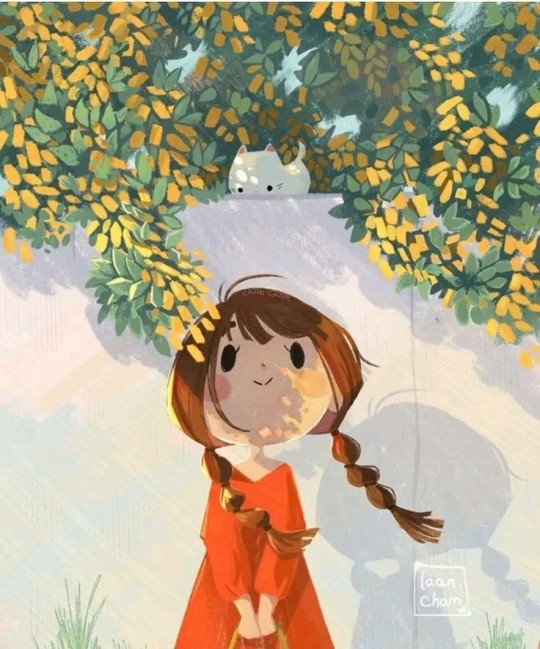
#astrology#astro observations#counseling#astrology observations#vedic astro notes#astro notes#vedic astro observations#astrology blog#astrologer
73 notes
·
View notes
Text
Why are Mercury, Jupiter, and Saturn planets that take time to achieve something?
versão em eng-pt / version in eng-pt
Mercury, Jupiter, and Saturn are planets that, for different reasons, are associated with a slower trajectory in terms of achievements. Each has a distinct approach, but in common, they symbolize processes that require patience and development over time.
Mercury is the planet of communication, intelligence, and learning. Although quick in movement, Mercury is linked to processes that demand constant adaptation and learning. Achieving something with Mercury depends on the ability to communicate, analyze, and learn from situations. Progress is incremental, as Mercury's success relies on accumulating knowledge, experience, and adapting to various scenarios.
Jupiter is the planet of expansion, wisdom, and spiritual growth. It governs generosity, ethics, and natural law, but its action is slow because it involves the search for meaning and truth. Jupiter’s achievements require long-term vision, the expansion of horizons, and internal growth. Since Jupiter also symbolizes teachers and gurus, it teaches that true success comes with patience and the gradual maturing of understanding.
Saturn is the planet of time, discipline, and restriction. It is known for testing patience and resilience, imposing challenges and obstacles that slow down progress. Saturn rules over karma and maturity through experience. Its achievements are lasting, but only come after much effort, hard work, and overcoming limitations. It rewards only those who persist and learn from difficulties over time.
These planets require a continuous process of development, patience, and persistence before delivering significant results.
Wherever these planets are in houses in your chart, something will take time to come to fruition. Mercury in the 5th house, for example, may indicate that your higher education will be necessary to achieve your goal, and this may take time. Saturn needs improvement and therefore achieves success in the course of a mature age. Jupiter needs to act in the time of the universe and be very clear in what it is doing, sometimes a person can take time to discover what they really want to do. There is no point in rushing into your career, love life or finances when these three planets are located in these respective houses.
They take the necessary time, but the result will be great.
°°°°°°°°°°°°°°°°°°°°°°°°°°°°°°°°°°°°°°°°°°°°°°°°°°°°°
Por que Mercúrio, Júpiter e Saturno são planetas que demoram para alcançar alguma coisa?
Mercúrio, Júpiter e Saturno são planetas que, por diferentes razões, estão associados a uma trajetória mais lenta em termos de conquistas. Cada um tem uma abordagem distinta, mas em comum, eles simbolizam processos que exigem paciência e desenvolvimento ao longo do tempo.
Mercúrio é o planeta da comunicação, inteligência e aprendizado. Embora rápido em movimento, Mercúrio está ligado a processos que exigem adaptação e aprendizado constante. Conquistar algo com Mercúrio depende da habilidade de comunicar, analisar e aprender com as situações. O progresso é incremental, pois o sucesso de Mercúrio depende de acumular conhecimento, experiência e se adaptar a diferentes cenários.
Júpiter é o planeta da expansão, sabedoria e crescimento espiritual. Ele rege a generosidade, a ética e a lei natural, mas sua ação é lenta porque envolve a busca por significado e verdade. As conquistas de Júpiter exigem uma visão de longo prazo, expansão de horizontes e crescimento interno. Como Júpiter também simboliza professores e gurus, ele ensina que o verdadeiro sucesso vem com paciência e o amadurecimento gradual da compreensão.
Saturno é o planeta do tempo, disciplina e restrição. Ele é conhecido por testar paciência e resiliência, impondo desafios e obstáculos que retardam o progresso. Saturno rege o karma e o amadurecimento através da experiência. Suas conquistas são duradouras, mas só chegam depois de muito esforço, trabalho duro e superação de limitações. Ele recompensa somente aqueles que persistem e aprendem com as dificuldades ao longo do tempo.
Esses planetas pedem um processo contínuo de desenvolvimento, paciência e persistência antes de entregar resultados significativos.
Onde quer que esses planetas estejam nas casas do seu mapa, algo levará tempo para se concretizar. Mercúrio na casa 5, por exemplo, pode indicar que sua formação superior será necessária para atingir seu objetivo, e isso pode levar tempo. Saturno precisa de melhorias e, portanto, alcança o sucesso no decorrer da idade madura. Júpiter precisa agir no tempo do universo e ter muito claro o que está fazendo, às vezes uma pessoa pode demorar para descobrir o que realmente quer fazer. Não adianta se apressar na carreira, na vida amorosa ou nas finanças quando esses três planetas estão localizados nessas respectivas casas.
Demorarão o tempo necessário, mas o resultado será ótimo.
#astronomy#jyotish#vedic astrology#astrologia#vedic astro observations#nakshatra#spirituality#spiritual awakening#dark moon#astrology#numerology#dark femininity#dark feminine energy#dark feminine aesthetic#sidereal astrology#vedicastrology#psicology#psicologia#thriller psicologico#ketu#rahu ketu#moola#moola nakshatra#nritti#goddess#vedic astro notes#sagitario#sagittarius#signos#astrologia védica
48 notes
·
View notes
Text
About Bharani
Fate, The female and Desire.

Venus ruled, Mars's sign, Rahu's birth, Saturn's debilitation.
A kind of love letter to myself and other bharanis, especially bharani moons.
So, aren't we amazing? 😄 jk, but in all seriousness, I have some opinions and want to express them.
We're mleccha(outcaste) and venus ruled. What the hell is that? We're precious, that's the truth.
If there is one nakshatra that caters to females exclusively, this has to be it. This is no male territory. They wouldn't even understand. They don't. Think of how helpless they are when a female is birthing, how clueless they are about what menstruating feels like. We know some things have to be gatekept, for our sake. That's what we are about: guarding, protecting, gatekeeping, and we do it harshly, mercilessly, there's no other real way of doing it anyways.
I want to talk about what i think Bharani nakshatra is truly about: Fate.
Fate, choicelessness, being at the mercy of higher beings, authority, hierarchy...
Bharani's symbol is widely known to be the yoni(female sexual organ), a gateway to another world. Another symbol is the boat. In Greek mythology, souls were transported to the underworld via a boat. In various cultures, when a person died, people would put the corpse on a boat and let it burn while it floated away on water. Bharani-death association is no news, but why are females the key to all this?
After the freedom in Ashwini, the Sun's exaltation, we come to restraint, and not restraint from our own will, but the restraint we have no choice but to accept. This is the first nakshatra where we see the female. This is Saturn's debilitation, and amidst all this restraint we have the birth of planet Rahu, the birth of desire. Makes for a thrilling combination, does it not? While the male is cerebral, solar, the female is material. She IS the nature. While the male does, female is. The male's the user, the female's the used, and she can be used unfairly, poorly, incorrectly. This is the place where the female gets her revenge. Bharani is like a protection mechanism for ladies, she's given the right to refuse and if that right is violated, the will get her revenge. I'd say she has the power, but that would be wrong, because she IS power.
After all, all that male energy needs grounding, or it will disperse, that's why the female and her body, as well as mother nature that we all live on, are vessels_ material manifestations of the male energy that they hold. Bharani is about the rules that the universe is governed by, the unchangeable rules, the simple truths that have to be accepted. When you realize that the female perfection can be so easily ruined by the incorrect use of male energy, the choicelessness gains a whole new meaning in this context. It's the female that is choiceless, she's simply replicating the energy given to her on the material plane, giving it a shape, its proper shape, and if they don't like what they see, the blame should not be placed on the feminine.
So the female is the material and the rules,the boundaries, the limitations. That's why, in the most stereotipical way, many men fear women or are annoyed by them. The fate cannot be escaped, fortunately or unfortunately, and it does not really care what any individual thinks, it's much bigger than that.
Mythologically, various cultures have attributed fate to the feminine. The fates in greek mythology, three women with their threads of human fate, are one one of them. Another one that comes to mind is the norse goddess Frigg. Although I wouldn't coorelate her to Bharani, I think it's interesting that the highest standing(debatable) Norse goddess has a spinning wheel and a spindle, and it had been said that she knows the fate of everyone and eveything but keeps silent. Another interesting example would be Arianrhod from Welsh mythology. Her name literally means "The Silver wheel". Her various symbols include the tools used for weaving. The wheel-fate coorelation is apparent, and it's also interesting that fate is something to be "weaved" in all these mythologies I've mentioned.
The movie Brave(2012) comes to mind, where the rebellious princess Merida wants to change her fate, without any spoilers, there's a scene in the end where she has to repair a tapestry to avoid some disaster. She also has a tumultuous relationship with her mother, something that is also closely connected to Bharani. A really good example of this is the movie Ladybird starring Saoirse Ronan and Laurie Metcalfe, both Bharani moons.
Now we come to the part where I mention my personal life. As Bharani moon my relationship with my mother has been chaotic and full of tension, it's not exactly easy to talk about or explain. I've also noticed this in almost every Bharani person I ever knew. We always have that passion to stand up to authority and injustice, and it frequently leads to quarrels.
TRIGGER WARNING (gaslighting)
So I always thought that the gaslight gatekeep girlboss term was very Bharani. We've discussed the gatekeeping part, the girlboss part is obvious, and about gaslighting... the yoni is called "the great deluder"(source_claire nakti. Had to credit her!).
I want to talk about the movie Tangled and about Rapunzel's tale in general. The original story goes like this: A couple want a child(that venus, rahu's birth, desire theme) and the wife is pregnant(another bharani symbol) and she's craving a plant- rapunzel, that grows in their neighbor's garden(again, the desire-craving theme). Their neighbor is a sorceress. The husband ultimately steals the rapunzel, but he is caught by its rightful owner. They strike a deal: he can take all the rapunzel he wants in exchange for the baby. The man agrees.
After some time, the baby girl is born, and the witch comes to claim her. She names her Rapunzel, after the plant, and eventually, when she's twelve, locks her up in a tower. Let's pause for a moment to note the fact that we already have the Bharani themes of karma, cause and effect, desire and now claim and ownership(bharani, as the first venus-ruled nakshatra often tries to claim things and label them as their own and then gatekeep it harshly, just like the sorceress in this story. It's also interesting that the OWNED is also feminine).
Now, I really relate to Rapunzel. I also feel like I'm always missing something and that I could attain if only i could escape my current circumstances(the tower). Despite this state, I'm also full of desire and enthusiasm. When I was 8 (?) I won the tickets for my family to the premier of Tangled at my friend's birthday party. I obviously loved it(I still do), loved the story, the animation, THE MUSIC, Eugene... but never did I ever imagine that it would be so emotionally relevant to my life 12 years later. I kinda cracked the code and realised why I love it so much, it's cause she's basically me, and to be honest, she's every human in the truest, simplest way possible.
Anyways, let's continiue wuth the story. Rapunzel is locked in and while she's safe from the world, she's not safe from her "mother". Here I want to move over to the movie Tangled, but before that I'll finish the original. A prince finds her, they become lovers behind the sorceress's back, she eventually finds it out because Rapunzel can't keep her mouth shut, she cuts off Rapunzel's long golden hair and exiles her. When the prince comes to the tower he is greeted by Dame Gothel instead of Rapunzel, she tells him he's not to see Rapunzel again, he falls from there into the rose bushes and blinds himself. After years of wandering, he and Rapunzel finally find each other, Rapunzel's tears heal his blindness, they go to his kingdom and live happily ever after. Now, to Tangled.
The relationship between Rapunzel and and Gothel in Tangled is explored well enough for the audience to realize that she's abusive and a gaslighter(watch cinema therapy on youtube, they have a video about Tangled. They're also very wholesome). She's lying to her to keep her to herself, not really caring about her at all. The way Rapunzel feels misunderstood by the person who raised her feels very personal to me. This theme of gaslighting is very Bharani, as well the theme that love conquers all which is prevalent in the original tale. Also, I think that the damsel in distress archetype is very Bharani, as is the princess in the tower trope. She is power herself, so she's this completely passive power, waiting to be seen and be of use, longing for the other side while being trapped(saturn's debilitation). Bharani is about that leap of faith, to approach the female, to stand up to authority, to be brave, to follow your heart...
My another point is what drives these actions, which is desire and love. Overcoming fear through desire is the theme of Bharani. That's the very basis of life. There are tons of things to be wary of, but if we had no desire, no lust for life, we might not have lived at all. It's no secret that life and death, or birth and death, nourish each other. It's simply a matter of time(saturn, the material. The illusion of time is nessecary for life, limitations are nessecary for life, as bharani teaches us, the point is, are your limitations correct for you and your desires?), it's a process created by the illusion of time, and all that is driven by desire. While analyzing the tale of Rapunzel, I've noticed that most people focus on her long golden hair, ignoring what this tale is truly about, which is destiny, karma, cause and effect, bravery, how desire can lead to actions that have undoable consequences, how helplessly we are driven by desire.
One of my favourite movies, Tristan + Isolde (2006) is about the famous couple written about in medieval texts. They live in a cruel world but they're still driven by love, even though everyone and everything around them urges them towards restraint. They choose the limitation based on their hearts, knowing of the consequences that they would most likely have to face. I won't spoil it for you, but there's a quote in the end that i think really represents the essence of Bharani, at least, from the human perspective: " I don't know if life is greater than death, but love was more than either." This is very poweful. Life and death are just opposite sides of the same coin, death leads to birth, birth leads to death, and it's all driven by desire, it's all driven by love. And whether or not we have choice in all of this, we still simply have to accept the truth, we have to accept our truest limitations, as that is only way of growth and self-realization.
I'll leave you to that movie, that quote and this song. Love all of you, take care ❤
Please, interact with me. Like, reblog, COMMENT, especially if you're bharani, I'd love to hear your thoughts.
#bharani#bharani nakshatra#vedic astrology#moon in bharani#moon in bharani nakshatra#feminine#Spotify#sirereal astrology#sun in bharani#ascendant in bharani#ketu in bharani#astrology#nakshatras#bharani observations#bharani nakshatra observations#astrology observations#vedic astrology observations#astrology tumblr
487 notes
·
View notes
Text
Legend VS LMK
Nüwa

Legend:
Name:
Mother Goddes, and Member of the Three Sovereigns of Chinese Mythology. The sister and wife of Fuxi. Nuwa is considered the goddess of creation and the female emperor of mankind. Her reverential name is Wahuang (Chinese: 媧皇; lit. 'Empress Wa'). That is due to Nuwa’s position of honor in the Chinese pantheon, Nuwa was given a character completely unique to her name – Wa. Nu is the character of woman and is often used as a prefix for goddesses.

Shes is a godess in Chinese folk religion, Buddihsm, Confucianism and Taoism
She is one of the most venerated Chinese goddesses alongside Guanyin and Mazu.
Origin:
Nuwa was created by her mother, the goddess Huaxu. While wandering the heavenly realms, Huaxu stepped into the footprint of the god of thunder Leigong and suddenly became pregnant. In the earliest versions of the myth, Huaxu gave birth in the earthly realm to only Nuwa.
In later versions, Huaxu gave birth to Nuwa and Fuxi. Nuwa and Fuxi were born with the bodies of snakes and the faces of humans, however, they could shapeshift into humanoid figures with two legs and a tail.
Nüwa & Fuxi Appearances:
The iconography of Fuxi and Nüwa vary in physical appearance depending on the time period and regional differences. In tomb murals and iconography, Fuxi and Nüwa generally have snake-like bodies and human faces or heads.
Nüwa is often depicted holding a compass or multiple compasses, which were a symbol of a dome-like sky. She was also thought to be an embodiment of the stars and the sky or a star god.
Fuxi and Nüwa can be depicted as individual figures arranged as a symmetrical pair or they can be depicted in double figures with intertwined snake-like bodies. Their snake-like tails can also be depicted stretching out towards each other. This is similar to the representation of Rahu and Ketu in Indian astrology.

As some tales of Nüwa and Fuxi, both sprang from the same mother at the same time, Taoists believed that Nuwa was the primordial personification of yin energy (female, gentle, intuitive, and receptive) and Fuxi was representative of the yang (male, fast, active, fierce). Coming together symbolized the reunion of the yin and yang energies which then united to create human existence.
Fuxi and Nüwa can also appear individually on separate tomb bricks. They generally hold or embrace the sun or moon discs containing the images of a bird or a toad (sometimes a hare) which are the sun and moon symbolism respectively. Them holding the sun and the moon appear as early as the late Western Han dynasty.

Other physical appearance variations, such as lower snake-like body shape, depictions of legs. and wings with feathers that protrude from their backs as found in the late Western Han Xinan Tomb or smaller quills found on their shoulders, and in hats and hairstyles.


the Gansu murals dating to the Wei and Western Jin period, one of the most typical features of Fuxi is the "mountain-hat" which looks like a three-peaked cap while Nüwa is depicted wearing various hairstyles characteristic of Han women. Both deities dressed in wide-sleeved clothing, which reflects the typical Han clothing style also commonly depicted in Han dynasty art.
Nüwa and Fuxi Other Stories:
In one version of their myth, soon after the birth of Nuwa and Fuxi, a great flood struck the earth, and only Nuwa and Fuxi remained unharmed after escaping by boat. As the years passed, and with only each other to keep themselves company, Nuwa and Fuxi longed for companionship. Unwilling to violate the laws of heaven by sleeping together as brother and sister, they prayed together seeking a sign of approval.
As they were the only humanoids of their kind left upon the earth, the Emperor of Heaven accepted their union. After mating, Nuwa gave birth to humanity, becoming the matriarch of mankind by giving birth to a ball of meat. Nuwa and Fuxi then divided the meat into pieces shaped as humans and scattered them across the world.
In another version of the creation tale, found in the Classic of Mountains and Seas, Nuwa and Fuxi lived upon legendary Kunlun Mountain. Trying to keep warm on a cold night, the twins created two fires. As the fires burned, they eventually became one. While watching the fires merge, Nuwa and Fuxi joined together as husband and wife. Deciding that they would like to have children, they molded clay into the shape of humans. Using their powers to imbue the small figurines with life, Nuwa and Fuxi created humanity.
Duyi Zhi volume 3, written by LiRong over a thousand years ago, gives a slightly different account of the Chinese creation myth – “There was a brother and a sister living on the Kunlun Mountain, and there were no ordinary people at that time. The sister’s name was Nuwa. The brother and sister wished to become husband and wife but felt shy and guilty about this desire. So the brother took his younger sister to the top of the Kunlun Mountain and prayed: “If Heaven allows us to be man and wife, please let the smoke before us gather; if not, please let the smoke scatter.” The smoke before them gathered together. So Nuwa came to live with her elder brother. She made a fan with grass to hide her face. (The present custom of women covering their faces with fans originated from this story).”
"But most versions give sol credit of humanity's creation to Nuwa. But in some of those Fuxi is credited with introducing a number of innovations and inventions that made significant improvements to the lives of his wife’s beloved creations. One of these, for instance, is the invention of fishing and domesticating animals. "
Creation:
After the goddess Hauxu gave birth to Nuwa, Nuwa roamed the earth alone. The earth was young and teeming with life, filled with blossoming trees and flowers. The lush grounds were covered with many types of animals, the skies were filled with birds, and the seas were full of fish. But while the earth was beautiful, Nuwa felt very lonely, despairing that there was no one to accompany her.
While walking one day, Nuwa was struck by the idea of creating living beings herself. First, she made a new type of bird that could not fly away from her by creating chickens. Then she wanted to make an animal that would be a constant companion, and Nuwa created dogs. On the third day, she made sheep. Then pigs. Then cows. On day six, Nuwa made horses On day seven, while Nuwa walked along a riverbank, she stopped to admire her reflection. As she stroked the hair from her face, she was struck with inspiration and thought to make life forms that looked like her. Nuwa began to scoop and mold yellow clay into figures that had arms and could stand upright upon legs. As she worked the mud in her hands, the figures came alive and began to move and speak. Soon, the creations began to sing and dance around Nuwa while honoring her. All of the loneliness Nuwa had known went away.
Thrilled at her results and filled with passion for her creation, Nuwa desired to make more humans faster. She realized that she could drag rope across the mud and mass produce them, as creating every person individually was beginning to take too much time and hurting her hands. Soon she began to whip the rope, flinging mud and making people faster and faster.
The people Nuwa molded by hand became the wealthy nobility. The ones she made by dragging the rope became commoners. And finally, the ones Nuwa made by whipping the rope became the servant class. As she finished making the last batch of humans it began to rain. Because some of these figures had not yet dried, the rain began to mark them and melt them. The last batch of humans that Nuwa created were damaged by the rain, and thus were the ancestors of those with sickness and deformities.
"She molded humans individually by hand with yellow clay. In other stories where she fulfills this role, she only created nobles and/or the rich out of yellow soil. The stories vary on the other details about humanity's creation, but it was a tradition commonly believed in ancient China that she created commoners from brown mud."
The Pillars:

One of the enduring myths of Nuwa is that of the repairing of the Pillar of Heaven. In the early days of earth’s existence, The earth was separated from the sky by four large pillars which had once been the arms and legs of the creator god, Pangu.
During these early days, the god of water, Gong Gong, and the god of fire, Zhu Rong, had been at odds for many years. Unable to hold back their fury at one another, they engaged in battle to determine who would be the god of the heavens. As they fought, fires raged and floods began to destroy the new earth.
Gong Gong was finally subdued by Zhu Rong, but in his rage, he slammed his head against Buzhou Mountain, one of the four pillars of heaven that had once been Pangu’s leg. An earthquake shook the earth, and the pillar collapsed tearing a hole in the skies.
Looking upon the earth, Nuwa was filled with compassion for her children who were suffering. The new creation of earth had been torn to shreds from the battle between the water and fire gods. Fires burned out of control and water poured in a deluge from the hole in the sky. Nuwa desired to help her children, so she sought out the sky turtle, Ao.
Nuwa threw herself at Ao’s mercy, hoping for a miracle to save her many children. The sky turtle, feeling compassion for the mother of humanity, took Nuwa’s sword and cut off one of his legs, offering it as a substitute pillar. After leaving Ao, Nuwa collected five colored stones (red, yellow, blue, white, and black) and melted them together to repair the hole in the heavens, while using Ao’s leg to replace the pillar.
( The five-colored stones symbolize the five Chinese elements (wood, fire, earth, metal, and water)
Waters poured on her relentlessly as she pushed the leg into position, and once in place, she shoved the ashes of burnt reeds into the remaining holes to plug the leaks. After replacing the pillar and stopping the deluge, Nuwa fell exhausted upon the earth and died.
While many are familiar with the Chinese myth of the Three Sovereigns and Five Emperors, some areas of south China revere Nuwa as one of the Three Sovereigns, reigning as Empress Wa after the death of Fuxi and the rise of Shennong.
Tying into China’s strong ancient matriarchal beliefs, after the reign of Fuxi, the Empress Wa’s rule was challenged by a neighboring tribal chieftan. After defeating the chief in battle, Nuwa dragged her enemy to the peak of Mount Buzhou. Filled with shame, the chief banged his head upon the mountain, tearing a hole in the sky.
As the waters poured from the heavens, the entire world soon flooded, killing all of creation except for her army which was protected by her godhood. Nuwa then found five colored stones and melted them together, patching the hole in the sky.
In other versions of the Pillar of Heaven myth, when Nuwa attempted to fix the sky with the five melted stones she soon found that there was not enough to fix the hole in the sky. Knowing there was no other choice, Nuwa used her own body to fix the remaining hole, sacrificing her life to keep her children safe. With the hole repaired the deluge ended, and humanity was able to thrive and multiply again.
"In all of the myths of the repair of the Pillar of Heaven, due to Ao’s leg being slightly shorter than the original pillars, Nuwa could not align the sky and earth the same as they were before. The sky slanted to the northwest. The earth slanted southeast.
Since the repair, the sun, moon, and stars all rise from the east and set to the west, and all of the rivers in China flow southeast. And due to the use of the multi-colored stones, the clouds of heaven now had different colors."
Other:
In southwest China, many of the minority groups still celebrate Nuwa as their primary goddess and honor her with the yearly Water-Splashing Festival. There are many temples to Nuwa and Fuxi, but the largest temple to the pair lies in Hebei Province, believed to be the ancestral home of all humanity.
The Classic of Mountains and Seas, dated between the Warring States period and the Han dynasty, describes Nüwa's intestines as being scattered into ten spirits.
In Shuowen Jiezi (c. 58 – 147 AD), China's earliest dictionary, under the entry for Nüwa author Xu Shen describes her as being both the sister and the wife of Fuxi. Nüwa and Fuxi were pictured as having snake-like tails interlocked in an Eastern Han dynasty mural in the Wuliang Temple in Jiaxiang county, Shandong province.
In the collection Four Great Books of Song (c. 960 – 1279 AD), compiled by Li Fang and others, Volume 78 of the book Imperial Readings of the Taiping Era contains a chapter "Customs by Yingshao of the Han Dynasty" in which it is stated that there were no men when the sky and the earth were separated. Thus Nüwa used yellow clay to make people. But the clay was not strong enough so she put ropes into the clay to make the bodies erect. It is also said that she prayed to gods to let her be the goddess of marital affairs.
In Ming dynasty myths about the transition from the Shang dynasty to the Zhou dynasty, Nüwa made evil decisions that ultimately benefited China, such as sending a fox spirit to encourage the debauchery of King Zhou, which led to him being deposed. Other tales have her and Fuxi as exclusively the "great gentle protectors of humanity" unwilling to use subterfuge Another telling of that story is from the famed Ming Dynasty novel Fengshen Bang. Nüwa is revered since Xia dynasty for creating the five-colored stones to mend the heavens, which tilted after Gonggong toppled one of the heavenly pillars, Mount Buzhou. Shang Rong asked King Zhou of Shang to pay her a visit as a sign of deep respect. Upon seeing her statue, Zhou was completely overcome with lust at the sight of the beautiful ancient goddess Nüwa. He wrote an erotic poem on a neighboring wall and took his leave. When Nüwa later returned to her temple after visiting the Yellow Emperor, she saw the foulness of Zhou's words. In her anger, she swore that the Shang dynasty would end in payment for his offense. In her rage, Nüwa personally ascended to the palace in an attempt to kill the king, but was suddenly struck back by two large beams of red light. After Nüwa realized that King Zhou was already destined to rule the kingdom for twenty-six more years, Nüwa summoned her three subordinates—the Thousand-Year Vixen (later becoming Daji), the Jade Pipa, and the Nine-Headed Pheasant. With these words, Nüwa brought destined chaos to the Shang dynasty, "The luck Cheng Tang won six hundred years ago is dimming. I speak to you of a new mandate of heaven which sets the destiny for all. You three are to enter King Zhou's palace, where you are to bewitch him. Whatever you do, do not harm anyone else. If you do my bidding, and do it well, you will be permitted to reincarnate as human beings." With these words, Nüwa was never heard of again, but was still a major indirect factor towards the Shang dynasty's fall.
Nüwa and Fuxi were also thought to be gods of silk
LMK:
Long ago, Nüwa sculpted humanity out of clay and mud. She believed her children would not survive the primordial sea of chaos, so she built the Pillar of Heaven and forged the cycles to protect them. But, a cataclysmic event left the pillar shattered. Nüwa crafted five-colored stones and reconstructed the pillar back to its original state. She entrusted four stones to the Four Symbols: the Vermillion Bird, the Black Tortoise, the White Tiger, and the Teal Dragon, the final one to be guarded by the Jade Emperor. After Monkey King's birth, Nüwa repurposed his stone to carry the Harbinger of Chaos. She was saddened by the creature's existence to sacrifice himself but knew that this was a necessary sacrifice to keep her children safe from the chaos beyond.
Thoughts:
Throughout the whole research into her real-world mythology. She has been credited for creating a few animals though monkeys are not mentioned that could be just my research or something else. But I actually found something similar to her pillar story number 3 that nearly matches the LMK version of her fixing the pillars. She was never in the JTTW. But some other thoughts on Nuwa and the pillars I think when she fixed the pillars she accidentally made Wukong. I don't remember where I read this but I think there was a version of JTTW that had the Jade Emperor say something about " Made with the essence of fragments of Godess Nuwas Power" Even if that might not be what I remember right. Maybe it could be in the LMK universe when the crew fought the Nine-headed demon, he used his chaos powers to bind them to certain sections of the wall.


MK is placed over his mural self, the silhouette of his destiny. And the others are placed over the sotnes that would later be them when they smashed them.

But then look at Wukong who is placed in Nuwas hand in the mural of her molding and creating humans.
This could be foreshadowing that it might be revealed and it might hold something of importance later. It might also explain why the goddess chose Wukong as the templet for her harbinger of chaos.
Other Media:
She does appear in the film "The Monkey King: Havoc in Heaven's Palace" and "Journey to the West II", both of which feature Nüwa creating Sun Wukong using one of the five-colored stones. The former film also features Nüwa sacrificing herself to rebuild Heaven, similar to her actions previous to Season 5.
Thnak you for reading if you have something i missed please leave it in the comments thank you :)
99 notes
·
View notes
Text
Svati - The Power of the Wind

Degrees: 6°40 Libra to 20°00 Libra Deities: Vayu, God of wind; Sarasvati, Goddess of knowledge and art Vimshottari Lord: Rahu (North Node of the Moon) Sounds: रु ru, रे re, रो ro, ता ta The core meaning: the wind is your element. Full of strength, you do not know what boundary means. You move, you search, you go far away to foreign lands, you learn new skills here and there, you spread your message everywhere. But sometimes, it is hard to handle this power. You can feel scattered at times: ups and downs, uncertainty and fear overwhelm you to the point you can forget yourself totally, letting toxicity enter your life. Now, you are lost in the fog. Or you overestimate yourself and destroy everything on your way like a storm. Walk in nature, introspect yourself: you will find your center and nothing will stop you. Qualities: creative, independent, diplomatic, optimistic, accurate, knowledgeable, sensitive, determined, flexible. Affliction: selfish or self-effacing, vulnerable, restless, indecisive, critical, reclusive, temperamental. Interest in studies, music, art, science, philosophy, trade.
#astrology#vedic astrology#jyotish#nakshatras#sidereal astrology#svati#svati nakshatra#swati#swati nakshatra#libra#astro#degrees#degree
66 notes
·
View notes
Text
Because I've seen people asking for it, here's all the information I have (and have made) for the PTN Goddess!AU. Keep in mind it's still in development, meaning I'm happy to hear people's ideas and input and I'll probably change things up from them.
CW: PTN Goddess!AU under the cut.
For this AU I'm using Greek Gods & Goddesses specifically. Mainly because I know about them the most and plus this was inspired by Chameleon, Chelsea, & Cabernet's Greek inspired attires.
Before I go into information on the PTN women, here's stuff to know about the Reader; They are a human who devotes their life to worshipping the Gods. So much so that's caught the attention of a few. They are devout and loyal to their Goddesses, worshipping not just at their shrines, but worshipping them in the bedroom as well.
Next, here's the women I don't have anything set up for yet (have chosen a Greek God they could be). So, would love to hear opinions on these women; Eleven, K.K., Macchiato, McQueen, Pricilla, Shalom, Stargazer, & Uni.
Now, here's a list of the other women and the Gods they represent in this AU;
✧ ADELA: Hades, God of the Underworld, the dead and riches.
✧ ANNE: Asclepius, God of healing and medicine.
✧ BAI YI: Hermes, God of travel, speed, thieves, trade and invention.
✧ CABERNET: Dionysus, God of grape-harvest, wine, orchards, madness and parties.
✧ CASSIA: Aglaia, Goddess of beauty, splendor, glory and adornment.
✧ CHAMELEON: Hypnos, God of sleep.
✧ CHELSEA: Aphrodite, Goddess of beauty, love, desire, passion and pleasure.
✧ CINNABAR: Soteria, Goddess of safety, salvation, deliverance and preservation from harm.
✧ COQUELIC: Demeter, Goddess of harvest, grain and fertility.
✧ CORSO: Lyssa, Goddess of mad rage, frenzy and rabies.
✧ DEREN: Pheme, Goddess of fame and renown.
✧ DREYA: Nyx, Goddess of the night.
✧ EIRENE: Plutus, God of abundance and wealth.
✧ ENFER: Hephaestus, God of technology, craftsman, sculptures and blacksmiths.
✧ GAROFANO: Hera, Goddess of women, marriage, childbirth and familial love.
✧ HAMEL: Terpsichore, Goddess of lyric poetry and dancing.
✧ IGNIS: Hestia, Goddess of hearth, home and family.
✧ IRON: Paean, God of healing and physicians.
✧ KELVIN: Khoine, Goddess of snow.
✧ LAMIA: Poseidon, God of the sea, storms, earthquakes and floods.
✧ LANGLEY: Athena, Goddess of wisdom, strategy, crafts and the arts.
✧ LISA: Apollo, God of the sun, light, plague, music, art, poetry, knowledge and truth.
✧ MANTIS: Pan, God of the wild.
✧ NOX: Psyche, Goddess of the human soul.
✧ NINETY-NINE: Kratos, God of strength.
✧ OAK CASKET: Thanatos, God of peaceful death.
✧ RAHU: Nemesis, Goddess of balance, retribution and vengeance.
�� RAVEN: Calliope, Goddess of epic poetry.
✧ SERPENT: Morpheus, God of dreams.
✧ SUMIRE: Persephone, Goddess of the springtime and vegetation.
✧ TETRA: Peitho, God of persuasion.
✧ ZOYA: Ares, God of war and courage.
148 notes
·
View notes